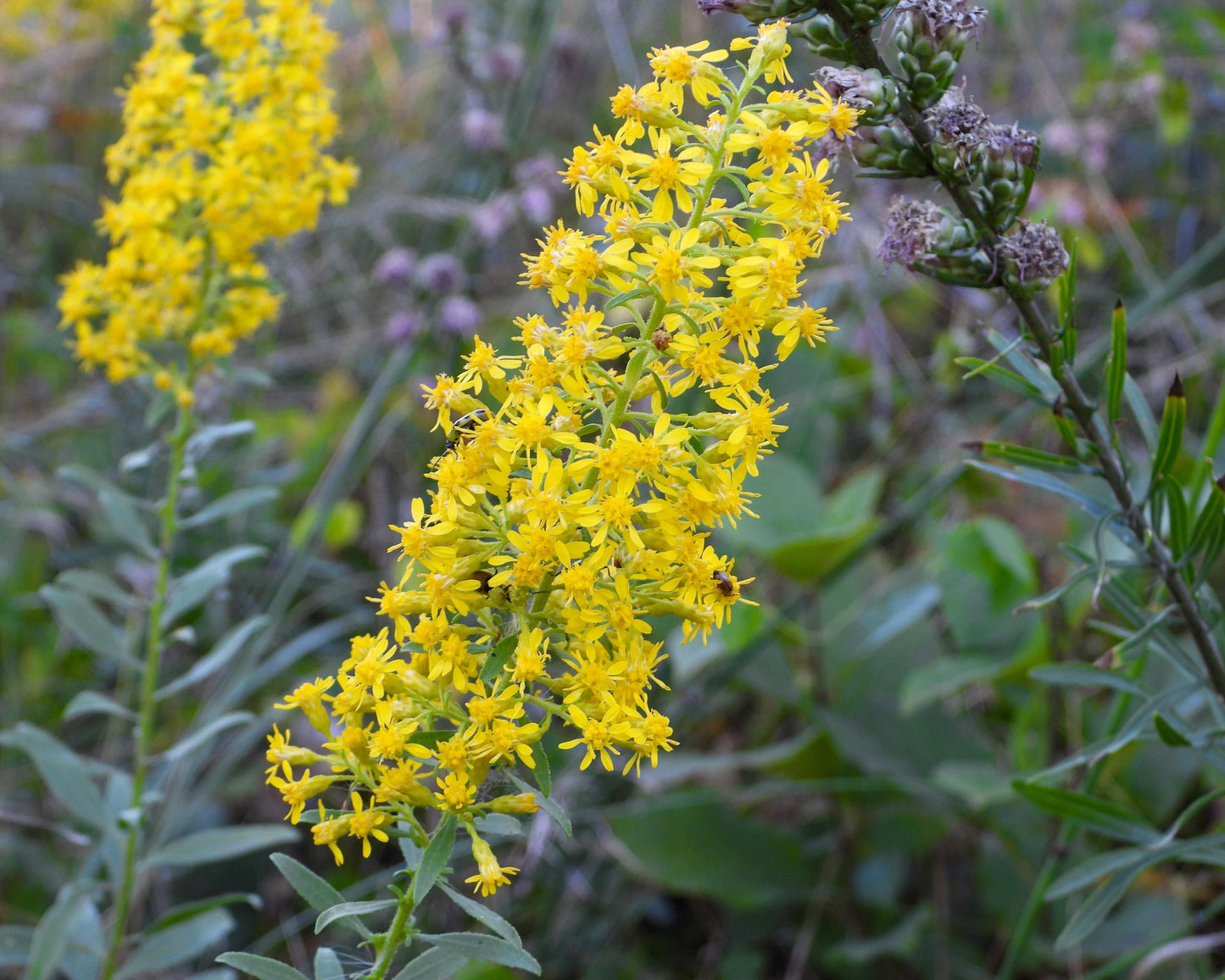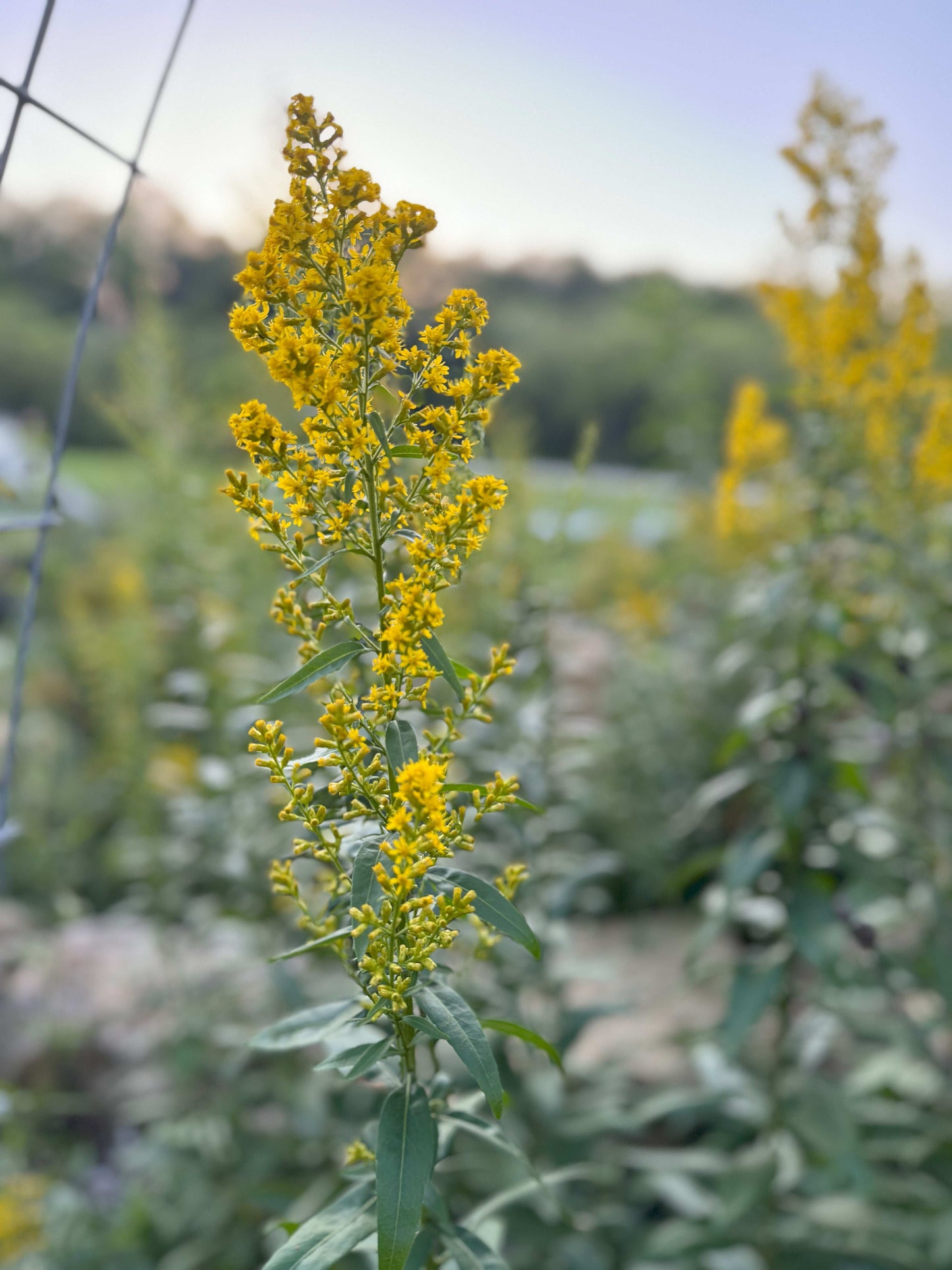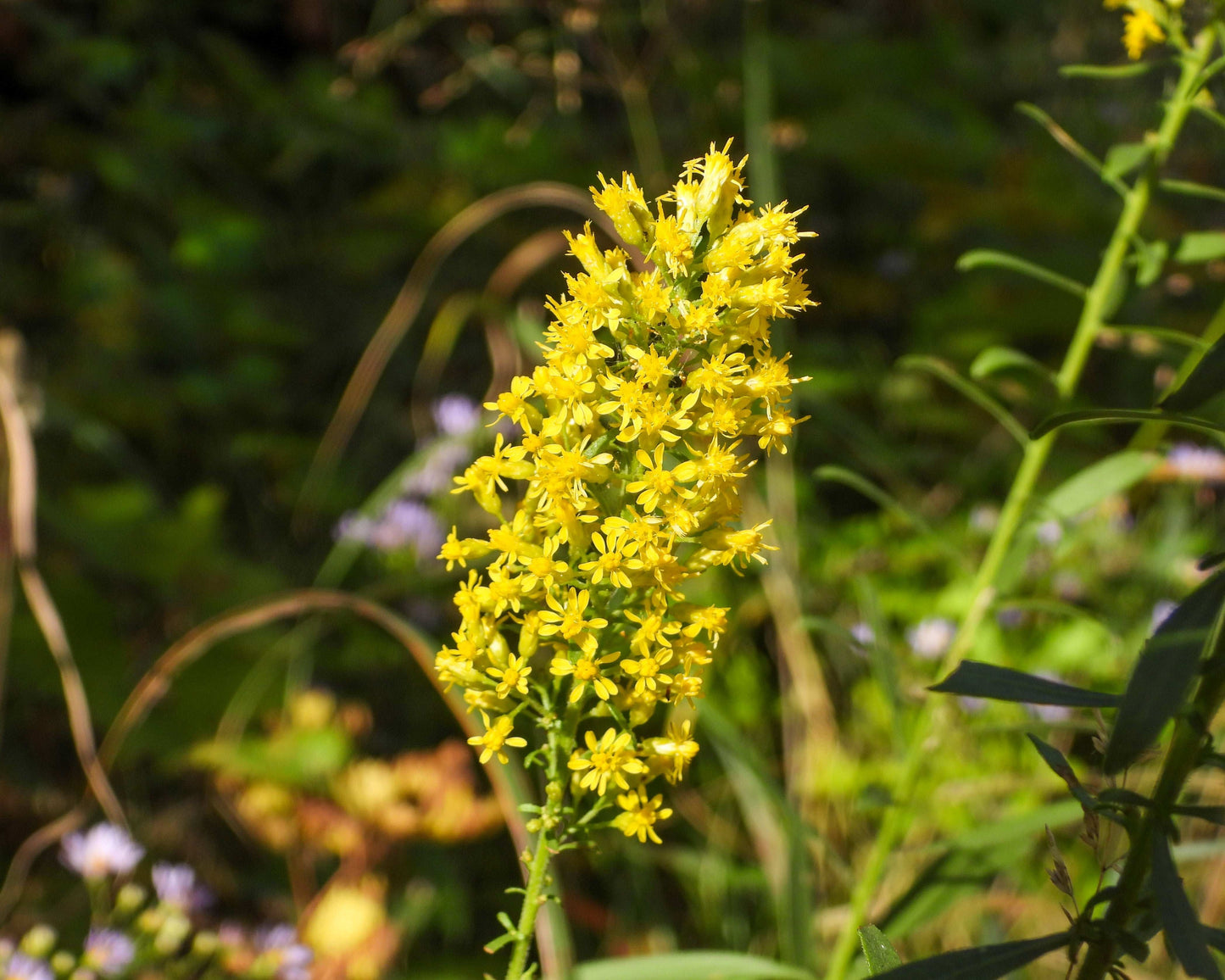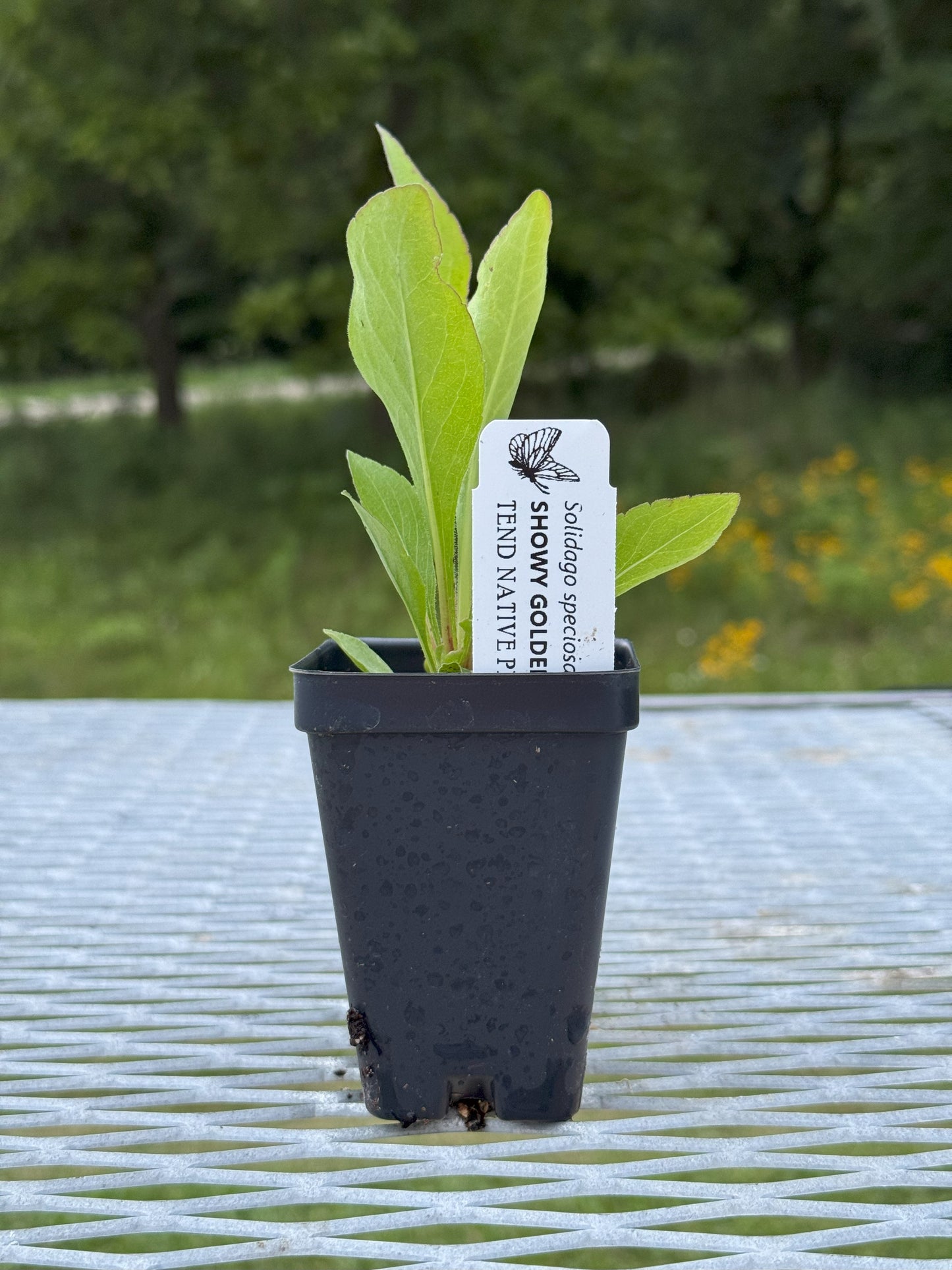Perennial
Solidago speciosa (showy goldenrod)
Solidago speciosa (showy goldenrod)
Couldn't load pickup availability
True to its name, the blooms on this plant are indeed showy. They are also a key nectar source for migrating monarch butterflies in the fall and can bloom into November. Host plant for several small moths that are important food for nesting birds. This is a nice goldenrod for smaller gardens, as it spreads slowly.
Sunlight: Full Sun and Partial
Water: Dry and Medium
Height: 3 to 5 feet
Bloom time: September, October, and November
Does goldenrod cause hay fever?
Does goldenrod cause hay fever?
No. Most seasonal allergies (aka hayfever) are caused by wind-pollinated plants. Goldenrod is insect-pollinated. That means the pollen isn't floating around in the air making you sneeze. The culprit? Likely ragweed, a wind-pollinated plant that blooms at the same time as goldenrod but is much less showy. For more details, check out this article from the National Wildlife Federation: The Goldenrod Allergy Myth
Keystone species, Feeds bees, Feeds butterflies or moths, Birds eat seeds, and Host plant
Plants are sold as small pots (2.5" x 3.5")
Share








